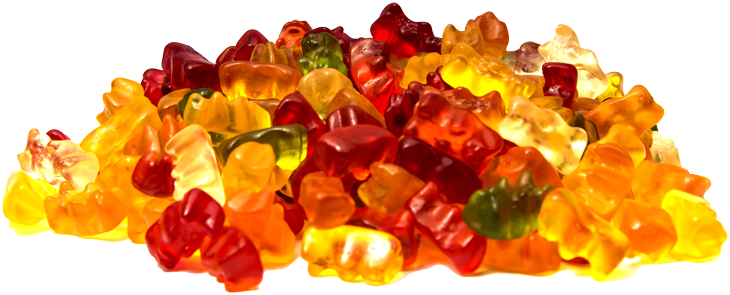An estimated $600 billion worth of food is lost during or just after harvest, reports McKinsey, which found that 33% to 40% of the world’s food is lost or wasted every year. “A devastating fact in less desperate times, it takes on even greater urgency today, in light of a looming global food crisis resulting from the knock-on effects of the war in Ukraine, COVID-19, and climate change. Already, one in nine people in the world can’t get enough to eat—that’s more than 800 million suffering from hunger. The consequences of food loss and waste will only get worse. (‘Food loss’ happens at harvest or soon after.)
“The loss of the food itself is bad enough, but the secondary effects are alarming as well: the water consumption linked to food loss and waste amounts to approximately one-fourth of the world’s freshwater supply. Greenhouse-gas (GHG) emissions from food loss and waste constitute 8% of the global total, or at least four times those of the aviation industry. The good news is that reducing food loss is immensely achievable. Our research shows that food manufacturers and retailers, because they are at the centre of the food value chain, are uniquely positioned to lead global efforts to reduce food loss. Working with each other and with all participants in the value chain, we believe they could cut food loss by 50% to 70%. Two-thirds of the food that would otherwise be lost could be redirected to human consumption; the remaining one-third would go to alternative uses, such as bio-based materials or animal feed.”
Exactly where in the supply chain does food get lost, and what factors contribute to this? In collaboration with the Consumer Goods Forum and its members, and working closely with leading European grocers and distributors, McKinsey investigated the farm-to-retailer journey, using tomatoes as the test case. They chose tomatoes because 50 million to 75 million tons of them are lost upstream every year—more than any other fruit or vegetable. In addition, lessons learned from the tomato’s journey can be extrapolated to other fresh-produce categories. Tomatoes are grown and eaten all over the world, are available year-round, can be eaten fresh or go through further processing, must conform to certain cosmetic standards (color, shape, and so forth), and resemble several other produce categories with regard to perishability.
McKinsey research shows that retailers could reduce their cost of goods sold (COGS) by 3% 6% and manufacturers by 5% to 10%. Grocers and manufacturers could capture $80 billion in new market potential by developing new businesses from food that would otherwise be lost. And they could cut CO2 emissions and the associated costs by 4% to 9%. These are the 10 things manufacturers and retailers need to know:
1. The categories at fault: Although meat and dairy have a high environmental impact per unit produced (it takes more than 1,000 gallons of water to produce a pound of beef, for example), meat accounts for only about 3% of food loss; dairy another 5%. Three other food categories—fruits and vegetables, cereals, and roots and tubers—account for much of the food loss and the associated CO2emissions and water use. Those categories should therefore be the focus of loss reduction efforts.
2. The tomato test: In developed countries, out of every 100 tomatoes, only 59 to 72 make it to a store shelf. In the developing world, the numbers are grimmer: only 35 to 58 make it to the store. At harvest, we estimate that one-third of the loss is linked to production surplus (the farm produced more food than it could sell); another third consists of food that is edible but doesn’t meet customer specifications; and the remaining third is because of damage that renders the food inedible. In short, two-thirds of the loss is edible and could be safely redirected to human consumption.’
3. Faults in the value chain: McKinsey research revealed that some food loss results from exogenous factors, such as weather events, or suboptimal practices within a specific stage of the supply chain, such as poor equipment maintenance—but some loss is linked to the interdependencies and interactions among the players in the value chain. Growers may overproduce because they are uncertain about market demand, while manufacturers and retailers often don’t have much transparency into supply. Stringent customer specifications can lead to excessive postharvest outgrading. Most procurement contracts don’t create incentives for reducing food loss.
4. How companies can turn food loss into big wins: Ultimately, addressing food loss will require mindset shifts by all stakeholders. Food manufacturers and retailers will need to see food loss as a result of inefficiencies and missed opportunities across production, procurement, R&D, the supply chain, and sales—not as an inevitable cost of doing business or a niche topic that concerns only the sustainability department. They should see reducing food loss as a potential value pool: an opportunity to improve both the top and bottom lines.
5. Create transparency and set targets: If you are a grocer or a food manufacturer, aim to gather directionally accurate information through a range of sources and techniques, such as interviewing internal teams, examining data from suppliers, and reviewing third-party research. Work with your suppliers to understand and monitor food loss, perhaps using the on-farm food loss measurement protocols readily available online. Set targets for both your own company and suppliers, and integrate food loss visibility and reduction into incentive structures. Stay aware of—or, even better, participate in—industry efforts to harmonise reporting and certification standards.
6. Map food loss: Forward-thinking companies are actively engaging with suppliers to map food loss “hot spots” in the supply chain and to understand their causes. Some companies are developing (and providing public access to) an integrated database of suppliers’ performance across locations. Others are conducting an annual external audit or requiring third-party assessment of suppliers’ performance on this issue. A few best-practice companies are using digital technologies, like blockchain, to make products traceable at every stage along the journey from farm to store.
7. Don’t wait for perfect data: Just gather enough information to sense the scope of the problem. Generating awareness of how much loss happens—and where—is an important first step in creating urgency for change.
8. Work with suppliers to better match supply and demand: This will require much more communication and transparency among the players in the value chain. Retailers will need to give farmers more information about expected demand; farmers will need to give retailers more visibility into their production plans. Some companies are starting to engage in long-term planning with their suppliers, working together to align on the volume and mix of crops—not just for the upcoming planting season but also for the next one and the one after that—thereby reducing uncertainty for the parties involved.
9. Overhaul procurement practices: How you buy must change dramatically. Shift away from a commoditised view of food and a focus on managing short-term costs; instead, consider launching structured supplier collaboration efforts or entering into innovation-focused partnerships. Don’t choose suppliers based on price alone. Take food loss reduction efforts into account when drawing up contracts, creating incentive structures, and establishing performance metrics. In addition, regularly review specifications and look for opportunities to make them less stringent, without compromising food safety or sell-through. (For example, through consumer surveys, grocers might find that consumers have a higher tolerance for colour variations than in the past, or that shoppers don’t pay much attention to the size of a particular fruit variety.) For manufacturers, reviewing specifications to optimise for loss reduction both at the farm and at the factory could lead to lower volume requirements.
10. Find creative ways to turn food loss into value: There is enormous potential to sell more of the food that farmers produce. Food that would otherwise be lost can be turned into new products and thriving businesses. Consider dedicating R&D resources to developing new revenue streams from nonmarketable food. AB InBev, for instance, invested $200 million in processing plants to turn its barley byproducts into a protein and fibre ingredient. It developed two new businesses as a result: a dairy-free protein drink sold under the Canvas brand and a protein ingredient that AB InBev now sells to other food manufacturers.
READ: The McKinsey report.
Main image credit: Pixabay.com.
– Receive the Retailing Africa newsletter every week • Subscribe here.







